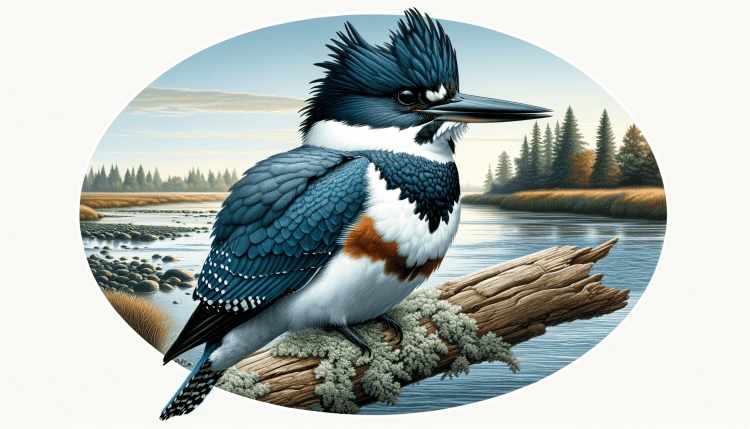
Oriental Dwarf Kingfisher Perched on a Branch
Quick Identification Guide for Kingfishers
- General Appearance:
- Sturdy, compact body with a large head and a long, sharp beak.
- Short legs and stubby tail.
- Bright, often iridescent plumage, commonly in blues, greens, and oranges.
- Common Kingfisher (Alcedo atthis):
- Vibrant blue and orange plumage.
- Often confused with:
- European Bee-eater (Merops apiaster): Larger and more slender, with a longer tail and beak, and lacks the kingfisher’s vivid orange belly.
- Blue Jay (Cyanocitta cristata) (in North America): Larger, with a crest and white underparts.
- Belted Kingfisher (Megaceryle alcyon):
- Slate blue with a white collar; males have a blue band across the breast, females have a blue and chestnut band.
- Often confused with:
- Pied Kingfisher (Ceryle rudis): Similar size but has a distinctive black and white plumage.
- Spotted Sandpiper (Actitis macularius) (in flight): Smaller and lacks the kingfisher’s distinctive bill and head shape.
- Kookaburra (Genus Dacelo):
- Large size with a heavy bill.
- Brown and white plumage, with a loud, distinctive laugh.
- Often confused with:
- Laughing Falcon (Herpetotheres cachinnans): Similar laughing call, but the falcon is more slender with a different head pattern.
- Behavioral Identification:
- Often seen perched quietly over water before making a quick, steep dive to catch fish.
- Solo hunters, except during breeding season.
- Habitat:
- Commonly found near bodies of water, but some species inhabit forests and dry areas.

Quick Facts About Kingfishers
- Family Name: Alcedinidae.
- Number of Species: Over 100.
- Habitat Range: Found on every continent except Antarctica; habitats include rivers, lakes, forests, and deserts.
- Diet: Primarily fish, but many species also eat insects, amphibians, reptiles, and small mammals.
- Nesting: Many species nest in burrows along riverbanks; others use tree cavities or termite nests.
- Size Variation: From the tiny African Dwarf Kingfisher (around 10 cm) to the Giant Kingfisher (up to 45 cm).
- Conservation Status: Varies from ‘Least Concern’ to ‘Vulnerable’ depending on the species.
- Unique Feature: Excellent vision, including the ability to correct for the refraction of light in water.
- Cultural Significance: Featured in mythology, folklore, and art across various cultures.
- Threats: Habitat loss, water pollution, and climate change are significant threats to many species.
For a more in-depth look at the magnificent Kingfisher bird, please see our article on The Complete Guide to Kingfisher Birds




